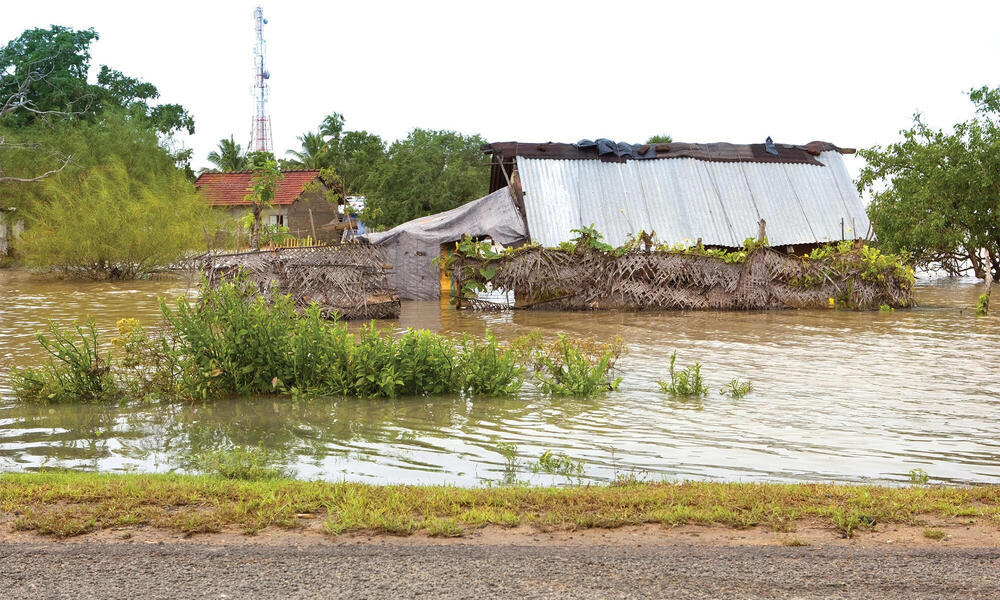-
Comment: ‘Nature positive’ has hit the mainstream. We need to ensure it delivers transformation, not greenwashing

November 28 – It’s rare that environmental terms become buzzwords, but that is what’s happened in recent months to “nature positive”. The phrase is suddenly everywhere, from nature-positive insurance to nature-positive fashion shows and nature-positive cities. Major businesses, including the likes of Salesforce, GSK, Holcim and Unilever, are setting out how they plan to contribute…
-
Healey-Driscoll Administration Launches Statewide Coastal Resiliency Strategy
Beverly — The Healey-Driscoll Administration today announced the launch of the ResilientCoasts initiative, a holistic strategy for addressing the impacts of climate change along the coastline of Massachusetts. In collaboration with the state’s 78 coastal communities, ResilientCoasts will pursue a multipronged approach to identify regulatory, policy, and funding mechanisms to develop focused long-term solutions. Notably,…
-
Looking to cure the boredom blues? Check out our guide to North Texas family-friendly events
Finding activities that the whole family can enjoy can sometimes feel like a bit of a chore. Even before you’ve discovered an activity everyone can agree on, there are still considerations like location, cost, age-appropriateness and, since we live in Texas, the weather, before you jump in the car and go. Who knew that looking…
-
Capturing methane from the air would slow global warming. Can it be done?

This summer was the hottest ever recorded on Earth, and 2023 is on track to be the hottest year. Heat waves threatened people’s health across North America, Europe and Asia. Canada had its worst wildfire season ever, and flames devastated the city of Lahaina in Maui. Los Angeles was pounded by an unheard-of summer tropical…
-
Climate Governance Commission, chaired by global and climate science leaders, presents urgent ‘to-do’ list for the planet
NEW YORK – Facing a “deepening planetary emergency” and “on a reckless path toward catastrophic climate change,” the world needs never-before-seen levels of collective wisdom, political courage, and accountability to change course, says a new report by the Climate Governance Commission. The report, “Governing Our Planetary Emergency,” presents fifteen actions – ten near-term proposals to…
-
An Evening with Elizabeth Kolbert

Co-sponsored by the Department of English Visiting Writers Series Journalist and New Yorker staff writer Elizabeth Kolbert traveled from Alaska to Greenland, visiting top scientists to get to the heart of the debate over global warming. Her book about mass extinctions, The Sixth Extinction: An Unnatural History, weaves intellectual and natural history with reporting in the field began as an article…
-
At COP28, Nature-Based Solutions are Needed to Combat Climate Change and Biodiversity Loss

WASHINGTON, D.C. – As the leading bird conservation organization in the Americas, the National Audubon Society will join world leaders at the 2023 UN Climate Change Conference (COP28) to call for a focus on nature-based climate solutions that address the dual crises of climate change and biodiversity loss. Audubon’s COP28 delegation will include CEO Elizabeth…
-
Trinity to headquarter Climate+ joint centre
The new €41.3 million research centre will be the home of research, innovation, and policy development across the interlinked challenges of climate change, biodiversity loss, and water degradation on the islands of Ireland and Britain. The Climate+ Co-Centre, which will initially be funded over six years by Science Foundation Ireland, Northern Ireland Department of Agriculture,…
-
New Study Uses Electronic Tags to Explore Relationship Between Fish Behavior and Offshore Wind Energy Construction

A new cooperative agreement between The Nature Conservancy (TNC) and the National Oceanic and Atmospheric Administration (NOAA) will enable scientists to implement a first-of-its-kind study investigating fish behavior in response to offshore wind turbine installation and related construction activities. This study will use fine-scale positioning technology and be conducted at the Coastal Virginia Offshore Wind…
-
COP28: A crucial moment for climate action

Will governments commit to phasing out fossil fuels at COP28? Despite more than 80 countries supporting a fossil fuel phase-out commitment at COP27, it failed to gain enough support to be included in the final agreement. Now, WWF, and people around the world, are urging negotiators to prioritize this issue and include a clear commitment…
